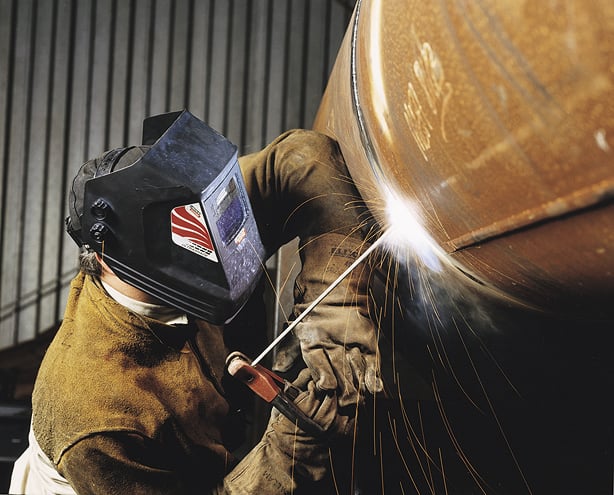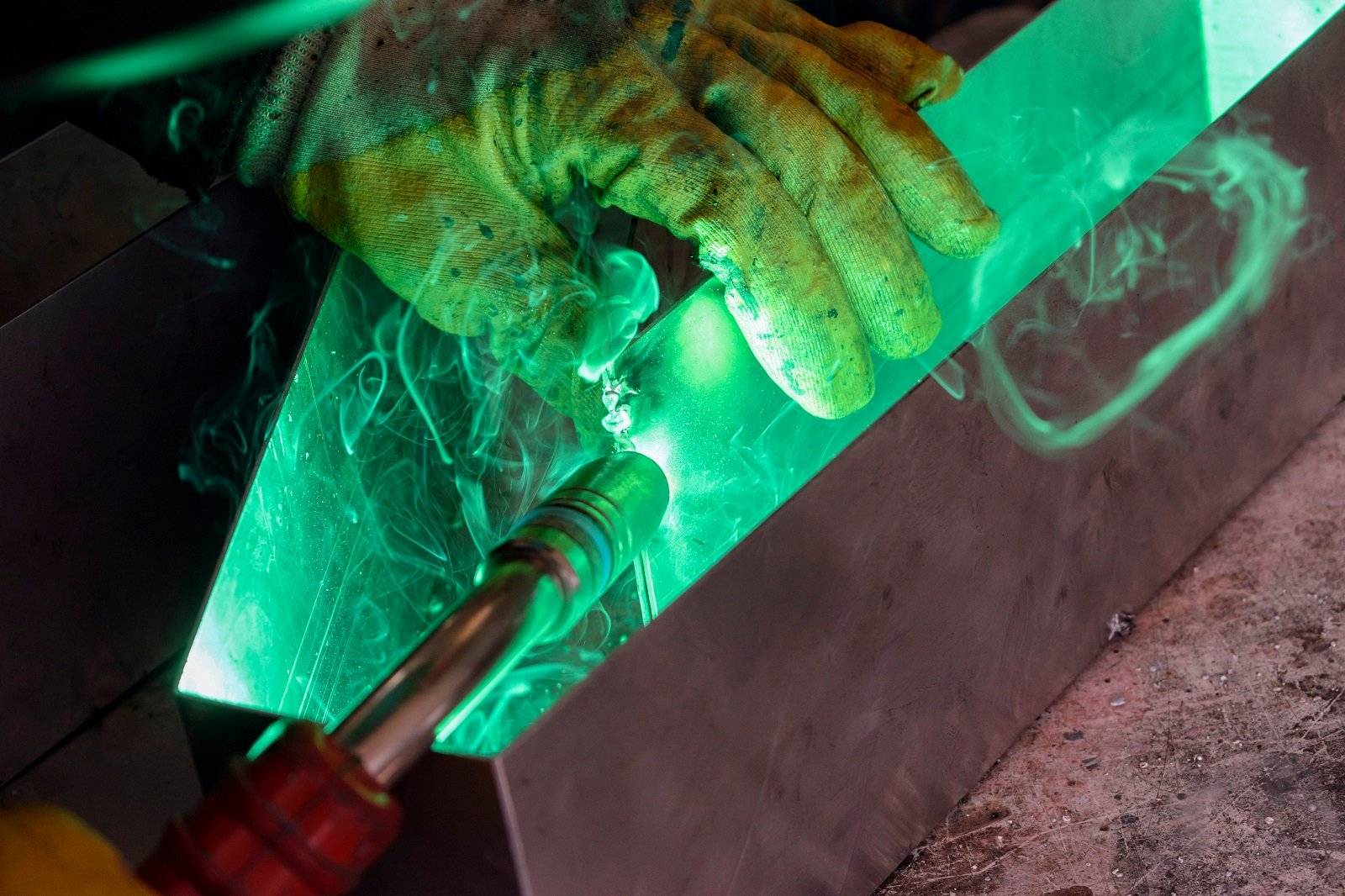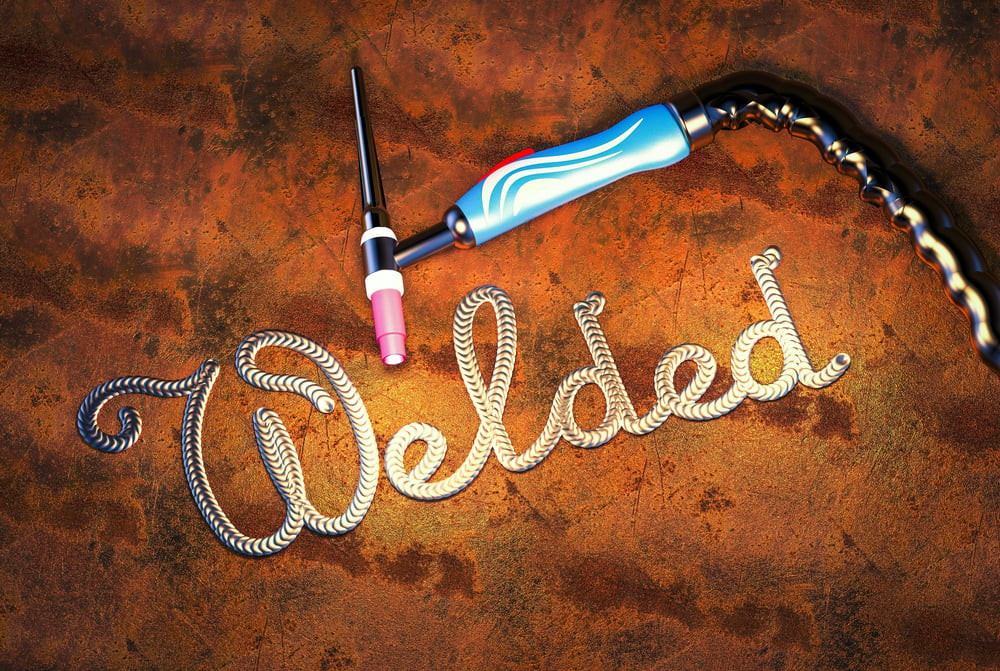Are you like me? Do you get easily confused by these many, many acronyms associated with welding and its processes?
Then take a look here at a comprehensive table from the good old arc welding group. It states the main welding processes and their associated abbreviations. Find out the acronyms for popular processes like stick welding and tig welding. As well as some more obscure welding process abbreviations, like EBW, HFRW and IRS.
Beyond the table, we’ve explored some of these welding process abbreviations in more detail…
| Group | Welding Process | Letter Designation |
| Arc welding | Carbon Arc | CAW |
| Flux Cored Arc | FCAW | |
| Gas Metal Arc | GMAW | |
| Gas Tungsten Arc | GTAW | |
| Plasma Arc | PAW | |
| Shielded Metal Arc | SMAW | |
| Stud Arc | SW | |
| Submerged Arc | SAW | |
| Brazing | Diffusion Brazing | DFB |
| Dip Brazing | DB | |
| Furnace Brazing | FB | |
| Induction Brazing | IB | |
| Infrared Brazing | IRB | |
| Resistance Brazing | RB | |
| Torch Brazing | TB | |
| Oxyfuel Gas Welding | Oxyacetylene Welding | OAW |
| Oxyhydrogen Welding | OHW | |
| Pressure Gas Welding | PGW | |
| Resistance Welding | Flash Welding | FW |
| High Frequency Resistance | HFRW | |
| Percussion Welding | PEW | |
| Projection Welding | RPW | |
| Resistance-Seam Welding | RSEW | |
| Resistance-Spot Welding | RSW | |
| Upset Welding | UW | |
| Solid State Welding | Cold Welding | CW |
| Diffusion Welding | DFW | |
| Explosion Welding | EXW | |
| Forge Welding | FOW | |
| Friction Welding | FRW | |
| Hot Pressure Welding | HPW | |
| Roll Welding | ROW | |
| Ultrasonic Welding | USW | |
| Soldering | Dip Soldering | DS |
| Furnace Soldering | FS | |
| Induction Soldering | IS | |
| Infrared Soldering | IRS | |
| Iron Soldering | INS | |
| Resistance Soldering | RS | |
| Torch Soldering | TS | |
| Wave Soldering | WS | |
| Other Welding Processes | Electron Beam | EBW |
| Electroslag | ESW | |
| Induction | IW | |
| Laser Beam | LBW | |
| Thermit | TW |
Arc Welding
The arc welding group includes eight specific processes, each separate and different from the others but in many respects similar.
The carbon arc welding (CAW) process is the oldest of all the arc welding processes and is considered to be the beginning of arc welding. The Welding Society defines carbon arc welding as “an arc welding process which produces coalescence of metals by heating them with an arc between a carbon electrode and the work-piece. No shielding is used. Pressure and filler metal may or may not be used.” It has limited applications today, but a variation or twin carbon arc welding is more popular. Another variation uses compressed air for cutting.
The development of the metal arc welding process soon followed the carbon arc. This developed into the currently popular stick welding/shielded metal arc welding (SMAW) process defined as “an arc welding process which produces coalescence of metals by heating them with an arc between a covered metal electrode and the work-piece. Shielding is obtained from decomposition of the electrode covering. Pressure is not used and filler metal is obtained from the electrode.”

Automatic welding utilizing bare electrode wires was used in the 1920s, but it was the submerged arc welding (SAW) process that made automatic welding popular. Submerged arc welding is defined as “an arc welding process which produces coalescence of metals by heating them with an arc or arcs between a bare metal electrode or electrodes and the work piece. Pressure is not used and filler metal is obtained from the electrode and sometimes from a supplementary welding rod.” It is normally limited to the flat or horizontal position.
The need to weld nonferrous metals, particularly magnesium and aluminium, challenged the industry. A solution was found called gas tungsten arc welding (GTAW) and was defined as “an arc welding process which produces coalescence of metals by heating them with an arc between a tungsten (non-consumable) electrode and the work piece. Shielding is obtained from a gas or gas mixture.”
Plasma arc welding (PAW) is defined as “an arc welding process which produces a coalescence of metals by heating them with a constricted arc between an electrode and the work piece (transferred arc) or the electrode and the constricting nozzle (non-transferred arc). Shielding is obtained from the hot ionized gas issuing from the orifice which may be supplemented by an auxiliary source of shielding gas.” Shielding gas may be an inert gas or a mixture of gases. Plasma welding has been used for joining some of the thinner materials.
Another welding process also related to gas tungsten arc welding is known as gas metal arc welding (GMAW). It was developed in the late 1940s for welding aluminium and has become extremely popular. It is defined as “an arc welding process which produces coalescence of metals by heating them with an arc between a continuous filler metal (consumable) electrode and the work piece. Shielding is obtained entirely from an externally supplied gas or gas mixture.” The electrode wire for GMAW is continuously fed into the arc and deposited as weld metal. This process has many variations depending on the type of shielding gas, the type of metal transfer, and the type of metal welded.

A variation of gas metal arc welding has become a distinct welding process and is known as flux-cored arc welding (FCAW). It is defined as “an arc welding process which produces coalescence of metals by heating them with an arc between a continuous filler metal (consumable) electrode and the work piece. Shielding is provided by a flux contained within the tubular electrode.” Additional shielding may or may not be obtained from an externally supplied gas or gas mixture.
The final process within the arc welding group of processes is known as stud arc welding (SW). This process is defined as “an arc welding process which produces coalescence of metals by heating them with an arc between a metal stud or similar part and the work piece”. When the surfaces to be joined are properly heated they are brought together under pressure. Partial shielding may be obtained by the use of ceramic ferrule surrounding the stud.
Brazing (B)
Brazing is “a group of welding processes which produces coalescence of materials by heating them to a suitable temperature and by using a filler metal, having a liquidus above 450oC and below the solidus of the base materials. The filler metal is distributed between the closely fitted surfaces of the joint by capillary attraction.”
A braze is a very special form of weld, the base metal is theoretically not melted. There are seven popular different processes within the brazing group. The source of heat differs among the processes. Braze welding relates to welding processes using brass or bronze filler metal, where the filler metal is not distributed by capillary action.
Oxy Fuel Gas Welding (OFW)
Oxy fuel gas welding is “a group of welding processes which produces coalescence by heating materials with an oxy fuel gas flame or flames with or without the application of pressure and with or without the use of filler metal.”
There are four distinct processes within this group and in the case of two of them, oxyacetylene welding and oxyhydrogen welding, the classification is based on the fuel gas used. The heat of the flame is created by the chemical reaction or the burning of the gases. In the third process, air acetylene welding, air is used instead of oxygen, and in the fourth category, pressure gas welding, pressure is applied in addition to the heat from the burning of the gases. This welding process normally utilizes acetylene as the fuel gas. The oxygen thermal cutting processes have much in common with this welding processes.
Resistance Welding (RW)
Resistance welding is “a group of welding processes which produces coalescence of metals with the heat obtained from resistance of the work to electric current in a circuit of which the work is a part, and by the application of pressure”. In general, the difference among the resistance welding processes has to do with the design of the weld and the type of machine necessary to produce the weld. In almost all cases the processes are applied automatically since the welding machines incorporate both electrical and mechanical functions.
Other Welding Processes
This group of processes includes those, which are not best defined under the other groupings. It consists of the following processes: electron beam welding, laser beam welding, thermit welding, and other miscellaneous welding processes in addition to electroslag welding which was mentioned previously.
Soldering (S)
Soldering is “a group of joining processes which produces coalescence of materials by heating them to a suitable temperature and by using a filler metal having a liquidus not exceeding 450 oC (840 oF) and below the solidus of the base materials. The filler metal is distributed between the closely fitted surfaces of the joint by capillary attraction.” There are a number of different soldering processes and methods.
Solid State Welding (SSW)
Solid state welding is “a group of welding processes which produces coalescence at temperatures essentially below the melting point of the base materials being joined without the addition of a brazing filler metal. Pressure may or may not be used.”
The oldest of all welding processes forge welding belongs to this group. Others include cold welding, diffusion welding, explosion welding, friction welding, hot pressure welding, and ultrasonic welding. These processes are all different and utilize different forms of energy for making welds.

